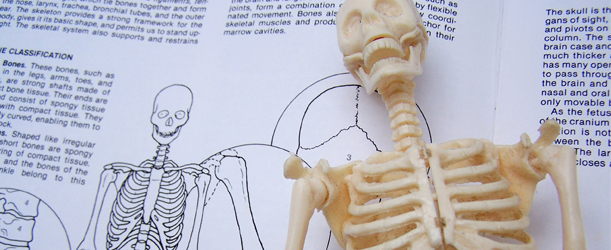
I was heading to Canada with a completely open mind. In fact, I was really excited about it after researching for a month. I was reading Dr. McGill’s stuff every night and learning more and more. I was starting to really doubt that any kind of surgery would help all of the issues I had going on...and this was confirmed during my last phone conversation with Dr. McGill.
He explained that when you have issues on multiple levels, the chances of a surgeon going in and fixing your pain by removing just one issue are very, very slim. And yes, I know others said the same thing...so yeah, you told me so. Furthermore, a micro-discectomy was not going to fix the structural issues I’m also facing. Four surgeons had told me the same thing about the other issues, and the word “fusion” was mentioned regarding my future.
Once I arrived at the University of Waterloo, I met up with Dr. McGill, and we got right to work. He introduced himself, looked at how I was standing, felt the contours of my back, and told me to sit down (I’ll come back to this later). We then reviewed my MRI. He spent about 30 minutes looking at the MRI, and then he started explaining everything to me. (Bear in mind that I’d only sent him two photos from the disk, and there were twelve). My chiro/PT, Dr. Amy Bernstein, mentioned some stress fractures last year after my initial x-ray; however, the five or six neurosurgeons who examined my MRI over the past two months didn’t even notice (or show concern about) the fact that my sacrum had suffered a substantial fracture. They also didn't seem concerned that my L4-L5 and L5-S1 had many vertebral fractures and bone bruises (a few vertebrae were extremely jagged—like someone had taken a chisel to them) from years of compression.
Dr. McGill pointed this out, also bringing to my attention the importance of letting this heal and not loading my spine at all for about three months. He didn’t seem as concerned about my bottom two disks being flattened and dry (or the bulges/herniations) as much as he did about the other issues.
After this, we headed into the lab, and he asked me what movement patterns hurt my back. He then wanted to figure out my pain triggers—standing, prone, supine, adduction, abduction, etc. He told me that he would hurt me, but it actually wasn’t that bad. He’d try something to see what started to trigger pain symptoms, I’d tell him, and then he’d back off and take note. For some, he would test the mechanical function of my back. For others, he would test the nerve roots. He kept trying to throw me curveballs, but the symptoms all kept coming back to what he saw on the MRI and what he believed to be the main causes of my pain.
He also did some very cool things with my hips and knees to evaluate my structure in order to see how I should be squatting in regards to the depth of my hip sockets. I was on my back (he found that I had shallow hip sockets), and he asked, “Is this your squat stance, raw?”
I nodded, wondering how he knew.
“Good!” he said.
I should note here that I’m not going to judge people who squat too wide, except to say that they’re likely hurting their bodies unnecessarily. Your squat stance depends on your build—not your flexibility, mobility, or what a lifter or program advocates. To each his own, but although I was learning things about what I was doing wrong, this was something I’d suspected for many years. We’ve all seen lifters who obviously squat too wide, and we can tell their bodies aren’t happy about it. And before I hear it from the peanut gallery: I know that powerlifting is generally not good for the body, but seriously, what is? There are ways to help your body last longer by avoiding unnecessary wear and tear.
Once Dr. McGill finished testing my body and finding my pain triggers, he started explaining what he was finding. He then put me in some movement patterns that he thought wouldn’t hurt, and he was dead-on. Then he explained why: the exercises we were doing were all performed while maintaining correct posture and locking the back in. He would also trick me into picking something up off the ground (like a kettlebell) and then stop me. I was literally wearing out my body all day while training clients, not to mention bending down to put my shoes on, taking a crap, walking the dog, and doing everything else. The idea here is that I would never be able to let my bone bruises and fractures heal if I kept loading them thousands of times per day. Mechanically, this is one of the main reasons I wasn’t getting any relief in this area even though I had already taken a lot of what I thought was downtime.
This will be the key to stopping the irritation of the affected area. The way I would often slam myself onto the floor for a session of floor presses or throw myself on the ground for foam rolling was a great recipe for back chaos. This is idiotic, and it’s unacceptable for anyone who’s trying to maintain a healthy back, much less come back to a high level of lifting.
The purpose of doing this is to move around the pain every day and let the areas desensitize. After not irritating the areas and movement patterns that cause the pain, the nerves will eventually be forced to stop being irritated and inflamed. Complicated? Not really, but avoiding the movements you do every day is easier said than done. This is something that’s going to take months to be able to do without thinking about it.
To be continued.








